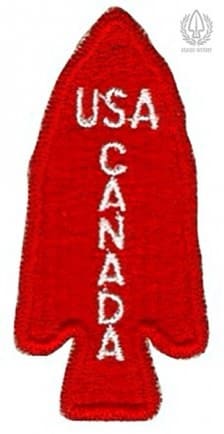FORT BRAGG, North Carolina – Seventy-five years ago, on December 5, 1944, the combined U.S.-Canadian First Special Service Force (FSSF) paraded one final time at their Villeneuve-Loubet camp, near the town of Menton, in southeastern France.

The FSSF was an elite commando unit activated in July 1942 to attack hydroelectric plants in Nazi-occupied Norway. Consisting of a headquarters, three combat regiments, and a service battalion, the unit prepared for combat with a rigorous program of physical fitness, close combat fighting, airborne, demolition, mountaineering, amphibious, and winter warfare training.
Commanded by U.S. Army Brig. Gen. Robert T. Frederick from July 1942 to June 1944, the FSSF earned the nickname the ‘Devils Brigade’ by the German Army for their aggressive night patrols defending a section of the Anzio beachhead in Italy.
Despite its effectiveness, a manpower crisis in the Canadian Army led to the unit’s inactivation. Having become a ‘band of brothers’ during combat operations in Kiska, Italy, and Southern France, the FSSF soldiers assembled at 1400 hours for a somber farewell. The order announcing the Canadian’s departure was read, followed by remarks from the commander, Col. Edwin A. Walker, the roll of the fallen, prayers, and a playing of taps. After the FSSF colors were sheathed, the order was given: “All Canadians fall out!” The 620 Canadian soldiers paraded, and received a salute from the Americans.
A Canadian sergeant from the 2nd Regiment remarked years later, that “It was the saddest day of my life, I think…Canadians were falling out that I thought were Americans and Americans were standing still who I thought were Canadians…There was no nationality in that bloody unit.”
The next day the Canadians boarded trucks taking them to ships bound for Italy. The FSSF Canadian veterans were reassigned to their parent unit, the 1st Canadian Parachute Battalion, or sent home based on overseas time served. Most American veterans volunteered for an airborne division, or were assigned to the 474th Infantry Regiment (Separate).
Commemoration of Menton Day on December 5, began thirty-five years ago when Army Special Forces honored its lineal connection to the FSSF. Over the years, various headquarters and units have observed Menton Day. Since September 11, 2001, some unit activities have grown to a week. Now, the 1st Special Forces Group, at Joint Base Lewis-McChord, Washington, has a memorial wreath laying, physical fitness competition, range day, a U.S.-Canadian parachute jump, and formal ball with a noted guest speaker.
Since 2006, Canadian Army Special Operations Forces (CANSOF) in their distinctive uniforms, tan berets, and badges incorporating a FSSF V-42 fighting knife, are seen at Menton ceremonies in the U.S. These ceremonies keep soldiers of both nations connected to their history and serve as a reminder of a tremendous legacy. The 1st Special Forces Regiment and all U.S. Army SF groups trace their official lineage to the FSSF.
-USASOC-
By Robert Seals, USASOC History Office


Both Villeneuve-Loubet and Menton are in Southeastern France, but Villeneuve-Loubet is between Cannes and Nice, while Menton is 45 km east, at the Italian border.
You failed to mention the Rangers:
It was during the Anzio campaign that the Force gained another element unique to the organization—the Cannon Company.
25 Burhans, The First Special Service Force, 183.
The “Ace of Spades” of the FSSF Cannon Company was an M-3 Halftrack mounting a 75mm cannon. The Cannon Company joined the FSSF at Anzio when the 6615th Ranger Force (Provisional) was disbanded in 1944.
The “Ace of Spades” of the FSSF Cannon Company was an M-3 Halftrack mounting a 75mm cannon. The Cannon Company joined the FSSF at Anzio when the 6615th Ranger Force (Provisional) was disbanded in 1944.
The Cannon Company was part of the 1st Ranger Battalion in North Africa. Formed by Lieutenant Colonel William O. Darby to provide firepower to the Ranger forces, the Cannon Company consisted of four M-3 halftracks mounting 75mm guns.26 Known as Darby’s “Ace in the Hole,” the four vehicles were called the “Ace of Spades,” “Ace of Hearts,” “Ace of Diamonds,” and “Ace of Clubs.” The Cannon Company came to the FSSF at Anzio following the disastrous 30 January 1944 attack on Cisterna that resulted in the destruction of the 1st and 3rd Ranger Battalions. In the attack, the two battalions lost 12 killed, 36 wounded, and 743 captured when the Germans encircled them.27 This action resulted in the disbanding of the 6615th Ranger Force (Provisional) and the Cannon Company was assigned to the Force along with many of the Rangers from the 4th Battalion. The Cannon Company provided fire support to the Force during the breakout of Anzio toward Rome and in Operation DRAGOON, the invasion of Southern France.
A Perfect Hell by John Nadler is a good read about the FSSF. HBO should turn that book into a Band of Brothers like miniseries.